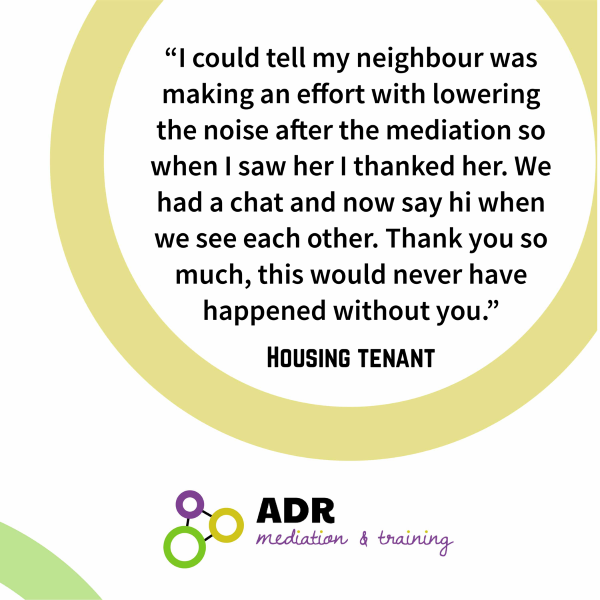During shuttle mediation the parties involved in the mediation don’t meet face to face. The mediator(s) ‘shuttles’ between them to help them find an agreement.
Why use shuttle mediation?
Shuttle mediation is a useful approach in the following scenarios:
- If people don’t feel comfortable meeting in person
- When relationships have deteriorated to the point where people cannot contemplate sitting in a room together
- If agencies advise that the parties don’t meet in the same room
- When someone is unable to leave their home
How it works
The mediation can still take place in person but with the parties kept separate. They could remain in separate rooms, for example.
Shuttle mediation can also take place online with the parties in separate virtual rooms. Conducting shuttle mediation over separate telephone calls is also an option.
Regardless of the medium, the mediator gathers the information from the parties and then communicates between them.
Essentially, shuttle mediation aims to follow the same process as a face to face meeting, but it can take longer due to its back and forth nature.
The drawbacks
Due to its divided nature there are a few downsides, including:
- As the parties don’t communicate directly they can’t see first-hand the impact the situation is having on the other person
- Losing this emotional element can make resolutions more difficult, or drag out the process
- Things can be lost in translation
- Responses, acknowledgments and solutions are not picked up instantly by the other party
- There’s no body language between the parties
With shuttle mediation you’re reliant on a resolution based on the practicalities. With the emotional aspect taken away it does become more difficult to reach an agreement. This is especially noticeable in cases where the parties were once friends.
Does it work?
As third party mediators we’ve always been sceptical when using shuttle mediation as a way to resolve conflict. We have generally used it as a last resort.
That said, over the last two years it’s proved incredibly useful with more people unable to leave home and we have used it more frequently and with some success.
As we adapted to online mediation it also became apparent that a high proportion of people did not have internet, computer or online platforms. Telephone shuttle mediation was a process we turned to regularly to help people in this situation.
Without the option of this form of mediation far less people would have engaged in mediation over this period.

Shuttle mediation does work, and when managed correctly it can bring about the same level of success as face to face mediation. It can also act as a stepping stone to get people to a joint mediation meeting in the future.
Our approach
Where possible we always prefer to get people talking face to face to resolve their issues.
We believe that results in more sustainable outcomes, but if that’s not possible shuttle mediation is a good alternative option to have available.
Do you need a third party mediation service?
At ADR Mediation we offer a range of mediation services to help housing associations manage all manner of tenant issues, from handling tenant complaints and conflict coaching, to helping you implement processes and training your teams to prevent issues escalating.
Call us on 01772 954602 or email info@adrmediation.org.uk to find out more about how we can help.

